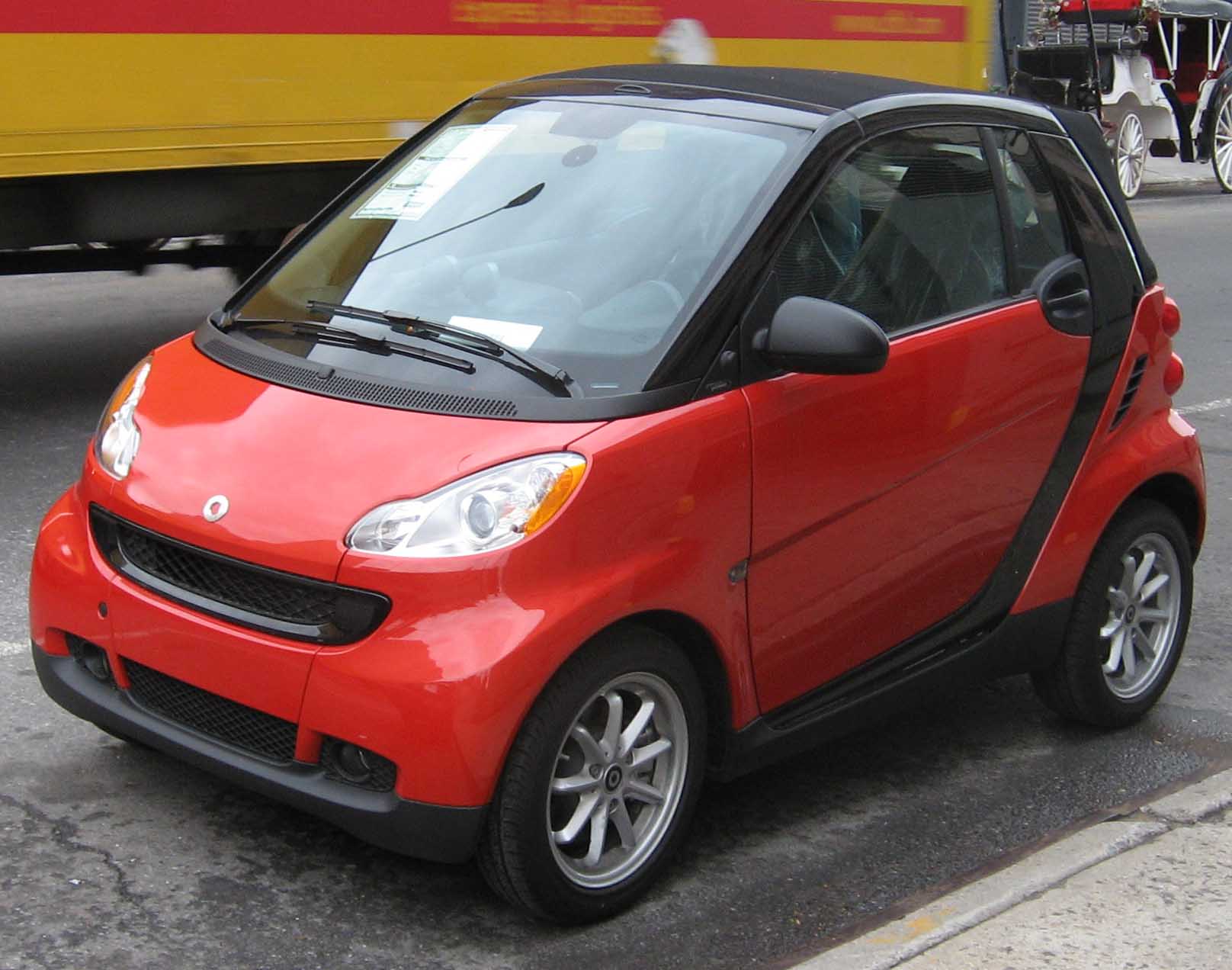2008 smart car mpg Revealed 40+ MPG?
The 2008 smart car mpg figures were a significant selling point for the tiny urban runabout when it first hit the US market. These diminutive vehicles, known for their unique design and fuel efficiency, promised drivers a different kind of driving experience. People were intrigued by the idea of a car that could easily navigate congested city streets and, at the same time, offer exceptional gas mileage. But how did this translate into the real world? Was the promise of impressive fuel economy a reality?
This article delves into the fuel efficiency of the 2008 smart car, examining its various aspects and providing a comprehensive overview. We'll explore the official figures, real-world performance, and factors that influence the 2008 smart car mpg. We'll also compare it to other vehicles and analyze why it captured the attention of eco-conscious drivers.
The smart car, with its distinctive appearance and compact size, offered a fresh perspective on personal transportation. This made it a popular choice for urban dwellers and those looking for a more environmentally friendly vehicle. So, let's find out if the 2008 smart car truly lived up to its reputation.
.jpg)
Understanding the 2008 smart car

The 2008 smart car, specifically the fortwo model, was designed to be a practical and efficient vehicle. Its small footprint made it incredibly maneuverable in tight spaces, and its fuel economy was a major selling point. Before diving deep into the 2008 smart car mpg figures, let's understand the car's design and engine.
Design and Features
The smart fortwo was a two-seater, two-door hatchback. Its most notable feature was its Tridion safety cell, a strong, reinforced steel cage designed to protect occupants. The exterior design was quirky and eye-catching, contributing to its popularity. Inside, the smart car offered basic but functional features.
Engine Specifications
The 2008 smart fortwo was equipped with a 1.0-liter, three-cylinder engine. This engine, though small, was designed to provide adequate power for city driving while prioritizing fuel efficiency. The engine produced around 70 horsepower, which might seem modest, but it was sufficient for its intended use. This small engine was a key factor in achieving the high fuel economy figures.
Official 2008 smart car mpg Figures

When the 2008 smart fortwo was new, the official EPA (Environmental Protection Agency) fuel economy estimates were highly anticipated. These figures played a crucial role in attracting buyers interested in saving money on fuel and reducing their environmental footprint. The EPA ratings provided a benchmark for potential buyers to compare the smart car against other vehicles.
EPA Ratings for City and Highway
The EPA rated the 2008 smart fortwo at approximately 33 miles per gallon (mpg) in the city and 41 mpg on the highway. These numbers were impressive for the time and significantly higher than many other vehicles in its class. The highway figure, in particular, made the smart car appealing to commuters and those who frequently traveled longer distances.
Importance of EPA Ratings
The EPA ratings serve as a standardized measure of fuel efficiency, allowing consumers to compare different vehicles easily. However, it is important to note that these ratings are based on controlled tests and might not perfectly reflect real-world driving conditions. Factors like driving style, road conditions, and maintenance can affect actual fuel economy.
Real-World 2008 smart car mpg Performance

While the official EPA ratings provide a good starting point, real-world performance can vary. Many factors can influence the 2008 smart car mpg that drivers experience, and it's essential to understand these variables. This section will explore what real-world drivers experienced and why the numbers might differ from the official ratings.
Factors Affecting Fuel Economy
Several factors can significantly impact the fuel economy of the 2008 smart car. These include:
- Driving Style: Aggressive acceleration and frequent braking can reduce fuel efficiency.
- Road Conditions: Driving on hilly terrain or in stop-and-go traffic can lower mpg.
- Tire Pressure: Underinflated tires increase rolling resistance, which reduces fuel economy.
- Maintenance: Regular maintenance, such as oil changes and air filter replacements, is essential for optimal fuel efficiency.
- Fuel Quality: The quality of the fuel used can also have a slight impact.
Driver Experiences and Reviews
Reviews from 2008 smart car owners often reflected the EPA ratings, with many drivers reporting excellent fuel economy. However, some drivers noted that their mpg was slightly lower than the official figures, especially in city driving. This discrepancy is typical, given the varying driving conditions and habits. It's worth reading owner reviews to get a sense of typical real-world performance.
Comparing the 2008 smart car mpg to Competitors

To understand the fuel efficiency of the 2008 smart car fully, it's beneficial to compare it to other vehicles from the same era. This comparison provides context and helps assess its position in the market.
Comparison with Similar Vehicles
When the smart fortwo was introduced in 2008, it faced competition from various vehicles. Consider these examples:
- Honda Civic: While a larger car, the Civic, especially the fuel-efficient models, offered respectable mpg, often exceeding 30 mpg on the highway.
- Toyota Prius: The Prius, being a hybrid, consistently delivered exceptional fuel economy, often reaching 45-50 mpg.
- Mini Cooper: The Mini Cooper, also a compact car, offered decent fuel economy figures, although generally lower than the smart car.
Market Position and Competitive Advantage
The 2008 smart car stood out due to its extremely small size and its ability to achieve excellent fuel economy. While the Toyota Prius had superior mpg, the smart car had a unique selling proposition with its urban-friendly dimensions and lower initial cost. This made it a strong contender for individuals and small families seeking a fuel-efficient and practical urban vehicle.
Maintenance and Long-Term Fuel Efficiency

Maintaining your 2008 smart car is crucial for preserving its fuel efficiency over time. Proper care and upkeep can significantly impact the long-term performance and fuel economy of the vehicle.
Essential Maintenance Tasks
Several maintenance tasks are important for optimal fuel economy:
- Regular Oil Changes: Use the manufacturer's recommended oil type and change it at the prescribed intervals.
- Air Filter Replacement: A clean air filter ensures proper airflow to the engine.
- Tire Pressure Checks: Maintaining the correct tire pressure reduces rolling resistance.
- Spark Plug Replacement: Ensure the spark plugs are replaced at the recommended intervals.
- Fuel System Cleaning: Periodically clean the fuel injectors to maintain performance.
Impact of Maintenance on MPG
Neglecting maintenance can lead to a decrease in fuel economy. For example, dirty air filters restrict airflow, reducing engine efficiency, while underinflated tires increase rolling resistance. Regular maintenance ensures that the engine operates at its best, thereby maximizing fuel economy.
Is the 2008 smart car mpg Still Relevant?
.jpg)
The fuel economy of the 2008 smart car remains relevant even today. While the technology has advanced significantly since its introduction, the basic principles of fuel efficiency still apply.
Modern Comparisons and Trends
Compared to modern vehicles, the 2008 smart car still performs quite well. Although today's hybrid and electric vehicles often surpass its fuel economy, the smart car remains competitive, especially for its size and price. The focus on fuel efficiency is a continuing trend in the automotive industry, with manufacturers constantly striving to improve mpg.
Future Considerations
The 2008 smart car provides valuable lessons about the importance of fuel-efficient designs and technologies. The focus on small, lightweight vehicles with efficient engines influenced the development of modern cars, and the search for lower emissions continues.
Learn more about EPA fuel economy standards at the U.S. Environmental Protection Agency website: https://www.epa.gov/.
Understanding the Transmission and its Impact on 2008 Smart Car MPG

The transmission in the 2008 smart car, specifically the automated manual transmission, plays a significant role in its fuel efficiency. This type of transmission, while designed to improve fuel economy, can have some quirks that affect driving experience and, consequently, the 2008 smart car mpg.
Automated Manual Transmission Explained
The 2008 smart car uses an automated manual transmission. This is essentially a manual transmission with an automated clutch and gear-shifting mechanism. The system automatically shifts gears, eliminating the need for a clutch pedal. While fuel-efficient, this transmission can sometimes be slower and less smooth than traditional automatic transmissions.
Transmission Performance and Fuel Economy
The automated manual transmission contributes to the smart car's fuel efficiency by optimizing gear changes for maximum economy. However, some drivers find the shifts to be less seamless than those of a standard automatic transmission.
Potential Drawbacks
The automated manual transmission can exhibit some lag between shifts, which some drivers find noticeable. This can sometimes impact the overall driving experience, but it's a trade-off for improved fuel efficiency. Further details about transmission technology can be found on Wikipedia: https://en.wikipedia.org/wiki/Transmission_(mechanics).
Conclusion
The 2008 smart car mpg represented a significant achievement in fuel-efficient vehicle design. With official EPA ratings of 33 mpg in the city and 41 mpg on the highway, it provided drivers with an economical and environmentally friendly option. While real-world performance might vary based on driving habits and conditions, the smart car generally delivered impressive fuel economy.
The smart car’s compact size, combined with its efficient engine, made it ideally suited for urban driving. Comparing it to competitors revealed its unique position in the market. Regular maintenance is essential for keeping the 2008 smart car operating at its peak fuel efficiency. Even today, its fuel economy remains relevant, highlighting the ongoing importance of fuel-efficient vehicle design.